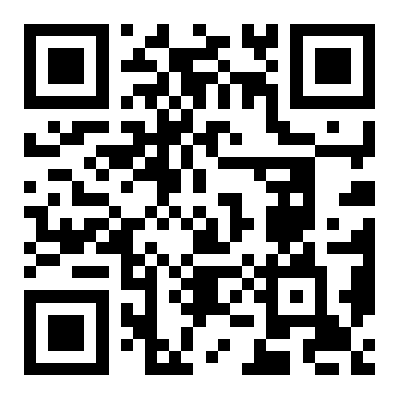| [1] |
Bao W X, Qiu X, Liang D, et al. Recognition insect images at the order level based on elliptic metric learning[J]. American Society of Agricultural and Biological Engineers, 2021, 37(1): 163-170.
|
| [2] |
鲍文霞,邱翔,胡根生,等. 基于椭圆型度量学习空间变换的水稻虫害识别[J]. 华南理工大学学报,2020,48(10):136-144.Bao Wenxia, Qiu Xiang, Hu Gensheng, et al. Rice pest identification based on elliptic metric learning space transformation[J]. Journal of South China University of Technology, 2020, 48(10): 136-144. (in Chinese with English abstract)
|
| [3] |
Jensen H G, Jacobsen L B, Pedersen S M, et al. Socioecomomic impact of widespread adoption of precision farming and controlled traffic in Denmark[J]. Precision Agriculture, 2012, 13(6): 661-677.
|
| [4] |
Lim S, Kim S, Park S, et al. Development of Application for Forest Insect Classification using CNN[C]. //2018 15th International Conference on Control, Automation, Robotics and Vision (ICARCV). Singapore: IEEE, 2018.
|
| [5] |
边柯橙,杨海军,路永华,等. 深度学习在农业病虫害检测识别中的应用综述[J]. 软件导刊. 2021,20(3):26-33.Bian Kecheng, Yang Haijun, Lu Yonghua, et al. Overview of the application of deep learning in the detection and identification of pests and diseases in agriculture[J]. Software Guide. 2021, 20(3): 26-33. (in Chinese with English abstract)
|
| [6] |
田杰,韩冬,胡秋霞,等. 基于PCA和高斯混合模型的小麦病害彩色图像分割[J]. 农业机械学报,2014,45(7):267-271.Tian Jie, Han Dong, Hu Qiuxia, et al. Color image segmentation of wheat diseases based on PCA and Gaussian mixture model[J]. Transactions of the Chinese Society for Agricultural Machinery, 2014, 45(7): 267-271. (in Chinese with English abstract)
|
| [7] |
Liu T, Chen W, Wu W, et al. Detection of aphids in wheat fields using a computer vision technique[J]. Biosystems Engineering, 2016, 141(2): 82-93.
|
| [8] |
Hafiz G A U, Qaisar A, Fatima G. Insect classfication using image processing and bayesian network[J]. Journal of Entomology and Zoology Studies, 2017, 5(6): 1079-1082.
|
| [9] |
Krizhevsky A, Sutskever I, Hinton G. ImageNet classification with deep convolutional neural networks[J]. Advances in neural information processing systems, 2012, 25(2): 84-90.
|
| [10] |
Simonyan K, Zisserman A. Very deep convolutional networks for large-scale image recognition[J]. Computer Science, 2014, 18(2): 1409-1556.
|
| [11] |
He K, Zhang X, Ren S, et al. Deep residual learning for image recognition[C]. // Proceedings of the IEEE Conference on Computer Vision and Pattern Recognition. Las Vegas, NV, USA: IEEE Computer Society, 2016.
|
| [12] |
Lecun Y, Bengio Y, Hinton G. Deep learning[J]. Nature, 2015, 521(1): 436-444.
|
| [13] |
鲍文霞,孙庆,胡根生,等. 基于多路卷积神经网络的大田小麦赤霉病图像识别[J]. 农业工程学报,2020,36(11):174-181.Bao Wenxia, Sun Qing, Hu Gensheng, et al. Field wheat head blight image recognition based on multi-channel convolutional neural network[J]. Transactions of the Chinese Society of Agricultural Engineering (Transaction of the CSAE), 2020, 36(11): 174-181. (in Chinese with English abstract)
|
| [14] |
孔建磊,金学波,陶治,等. 基于多流高斯概率融合网络的病虫害细粒度识别[J]. 农业工程学报,2020,36(13):148-157.Kong Jianlei, Jin Xuebo, Tao Zhi, et al. Fine-grained recognition of pests and diseases based on multi-stream Gaussian probability fusion network[J]. Transactions of the Chinese Society of Agricultural Engineering (Transaction of the CSAE), 2020, 36(13): 148-157. (in Chinese with English abstract)
|
| [15] |
Li Y, Wang H, Dang L M, et al. Crop pest recognition in natural scenes using convolutional neural networks[J]. Computers and Electronics in Agriculture, 2020, 169(1): 302-310.
|
| [16] |
Liu Z, Gao J, Yang G, et al. Localization and classification of paddy field pests using a saliency map and deep convolutional neural network[J]. Scientific Reports(Sci Rep), 2016, 6(1): 1-9.
|
| [17] |
Nanni L, Maguolo G, Pancino F. Insect pest image detection and recognition based on bio-inspired methods[J]. Ecological Informatics, 2020, 57(1): 2-14.
|
| [18] |
Jie H, Li S, Gang S, et al. Squeeze-and-Excitation Networks[J]. IEEE Transactions on Pattern Analysis and Machine Intelligence, 2018, 42(8): 2011-2023.
|
| [19] |
Woo S, Park J, Lee J Y, et al. CBAM: Convolutional block attention module[C]. European Conference on Computer Vision, Munich, Germany: Springer, 2018.
|
| [20] |
Wang X, Girshick R, Gupta A, et al. Non-local neural networks[J]. Computer Science, 2017, 1711(2): 7794-7803.
|
| [21] |
Zeng W, Li M. Crop leaf disease recognition based on Self-Attention convolutional neural network[J]. Computers and Electronics in Agriculture, 2020, 172(1): 4-14.
|
| [22] |
王美华,吴振鑫,周祖光. 基于注意力改进CBAM的农作物病虫害细粒度识别研究[J]. 农业机械学报,2021,52(4):239-247. Wang Meihua, Wu Zhenxin, Zhou Zuguang. Research on fine-grained recognition of agricultural diseases and insect pests based on improved CBAM of attention[J]. Transactions of the Chinese Society for Agricultural Machinery, 2021, 52(4): 239-247. (in Chinese with English abstract)
|
| [23] |
Gonzalez, R C, Woods. Digital image processing[J]. Beijing: Electronic Industry Press, 2005: 175-207.
|
| [24] |
陆涛. 基于统计特征分类耦合自适应Gamma校正的图像增强算法[J]. 电子测量与仪器学报,2020,34(6):154-162. Lu Tao. Image enhancement algorithm based on statistical feature classification coupled with adaptive Gamma correction[J]. Journal of Electronic Measurement and Instrument, 2020, 34(6): 154-162. (in Chinese with English abstract)
|
| [25] |
Ren F, Liu W, Wu G. Feature reuse residual networks for insect pest recognition[J]. IEEE Access, 2019, 7(1): 122758-122768.
|
| [26] |
Loshchilov I, Hutter F. SGDR: Stochastic gradient descent with warm restarts[C]. Toulon, France: OpenReview.net, 2016.
|
| [27] |
周志华. 机器学习[M],北京:清华大学出版社,2016:230-245.
|
| [28] |
Saini R, Jha N K, Das B, et al. ULSAM: Ultra-lightweight subspace attention module for compact convolutional neural networks[C]. IEEE Winter Conference on Applications of Computer Vision (WACV). Snowmass. CO. USA, IEEE, 2020, 12(4): 1616-1625.
|
| [29] |
Selvaraju R R, Cogswell M, Das A, et al. Grad-CAM: Visual Explanations from deep networks via gradient-based localization[J]. International Journal of Computer Vision, 2020, 128(2): 336-359.
|
| [30] |
Park J, Woo S, Lee J Y, et al. BAM: Bottleneck attention module[C]. Newcastle, UK:British Machine Vision Conference (BMVA). 2018.
|
| [31] |
Howard A, Sandler M, Chen B, et al. Searching for MobileNetV3[C]. Seoul, Korea (South): IEEE. 2019.
|












 DownLoad:
DownLoad: